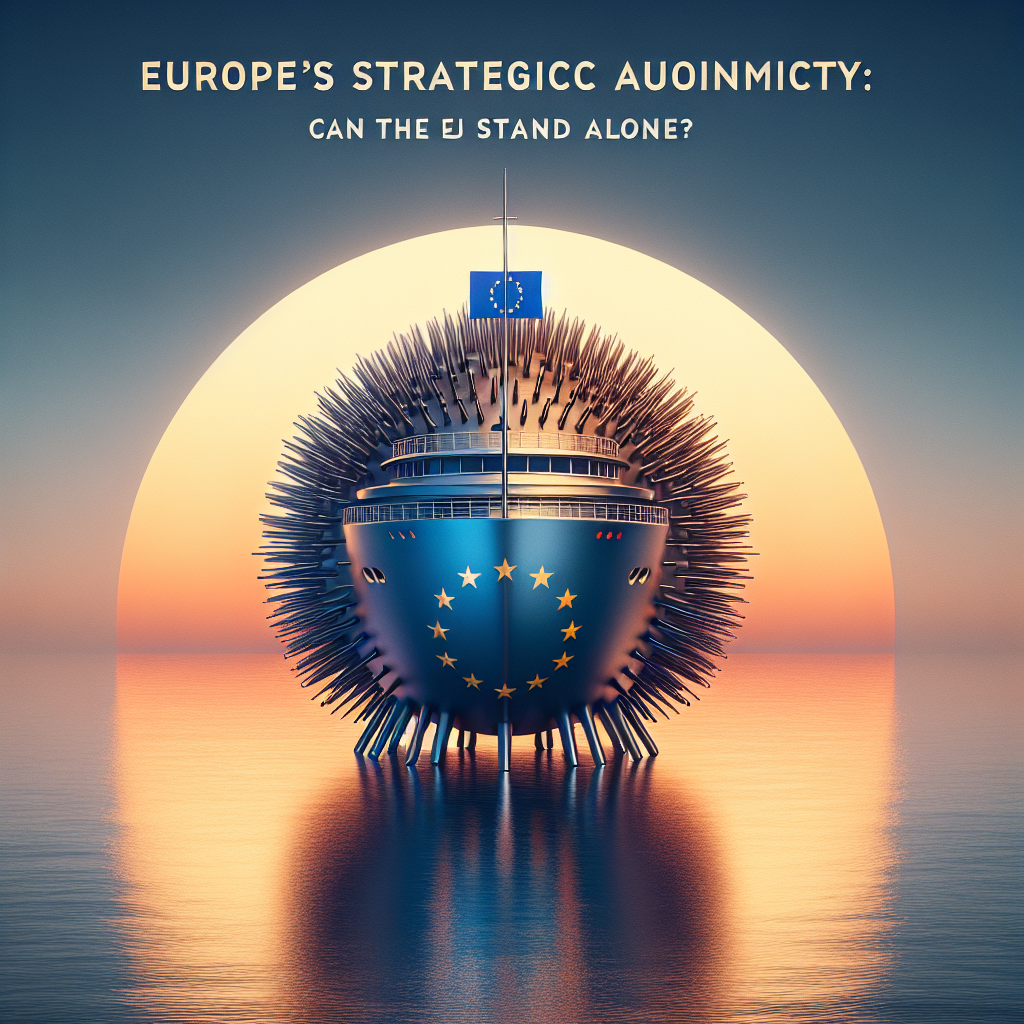
Europe’s Strategic Autonomy: Can the EU Stand Alone?
Europe’s Strategic Autonomy: Can the EU Stand Alone?
Understanding Strategic Autonomy
The Origins of Europe’s Drive Toward Autonomy
- Changing US Politics: The fluctuating commitment of the United States to NATO and international alliances has led European leaders to reconsider their reliance on American security guarantees.
- Emergence of China: China’s assertive foreign policy and its role as a global manufacturing hub have posed challenges to Europe’s economic interests.
- Technological Rivalry: The race for technological dominance, especially in 5G, AI, and cyberspace, underscores Europe’s desire to develop its own technological infrastructure.
The Pillars of European Strategic Autonomy
1. Defense and Security
2. Technological Sovereignty
3. Economic Independence
Challenges to Achieving Full Autonomy
- Internal Fragmentation: The EU’s member states have diverse strategic interests, economic strengths, and political priorities, which can impede unified action.
- Dependence on External Markets and Technologies: Despite efforts, Europe remains heavily reliant on imported energy, raw materials, and advanced technologies.
- Financial and Structural Constraints: Building autonomous defense and technological infrastructure requires enormous investments, which may strain European budgets.
- Global Power Balance: The dominance of the US and China in technological and military sectors complicates Europe’s quest for independence, as many critical supplies and technologies are intertwined with these powers.
The Role of Transatlantic Relations
The European Green Deal and Autonomy
Future Prospects: Can the EU Stand Alone?
- Political Will and Unity: Achieving true autonomy requires cohesive policies and strong leadership among member states.
- Technological and Industrial Innovation: Europe must accelerate its R&D efforts to develop cutting-edge technology and manufacturing capabilities.
- Global Geopolitical Context: As international power dynamics evolve, Europe’s capacity to remain autonomous will be tested by external pressures and conflicts.
The Broader Implications of Europe’s Autonomy
- Global Power Balance: A more autonomous EU could shift the geopolitical landscape, affecting US-China competition.
- Economic Stability: Reducing vulnerability to external shocks can promote sustainable growth and resilience within Europe.
- Global Governance: An autonomous Europe could take on a more prominent role in shaping international laws, climate policies, and security frameworks.


